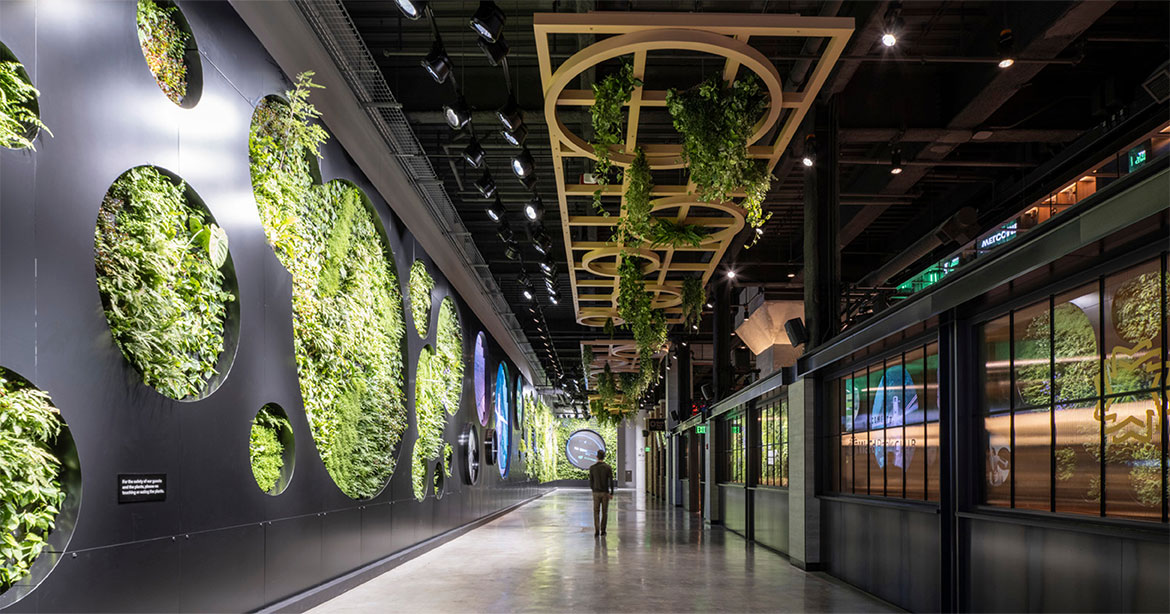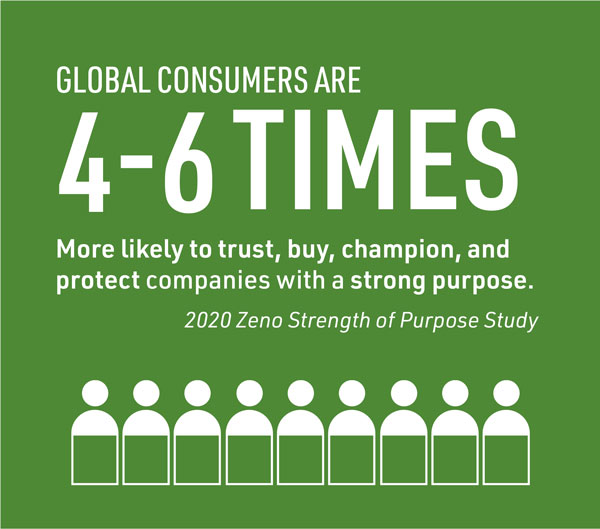
Read time: 9 mins
Sports venues have long been community hubs, hosting thrilling games and uniting fans. However, as the world becomes increasingly conscious of environmental impact, sports facilities can no longer be just venues. Sports venues have become beacons of organizational purpose.
Fans and players are demanding more from the organizations they support and sign to. As a result, sports business stakeholders, owners and investors must recognize sustainability isn’t just the right thing to do, it’s a strategic imperative.
As owners confront their environmental footprint and analyze whether to build a new facility or renovate their historic home, they quickly learn not all have the luxury of special funding allocations to fully embrace sustainability.
While some venues may lack the time, resources, and administrative capacity to pursue rigorous green certifications, there is a path for all organizations to integrate sustainability in a way that is authentic to their locale, fanbase and business.
“Ultimately, the location of your facility and your desired game-day experience will drive the sustainability features you are looking for,” Julianne Laue, director of building performance with Mortenson, aptly explains. “A stadium in Minnesota might focus on efficient lighting and ventilation systems to mitigate the impact of cold Midwest winters on fans, whereas a facility in Florida might aim to harness solar panels while maintaining hurricane resiliency.”
Embracing green initiatives not only enhances fans’ game-day experiences but can also yield long-term operational cost savings and supports community development. As global consumers critically analyze the entities they support, integrating sustainability and promoting purpose-driven partnerships will be more impactful to your business than ever.
Diverting Concessions Waste | The Green Team
Food plays a significant role in the sports experience, but it also generates substantial waste. To address this, sports venues are implementing waste diversion programs that focus on recycling, composting and reducing single-use plastics. These efforts not only benefit the environment but also engage fans and foster corporate partnerships.
At Truist Park in Atlanta, the Atlanta Braves partnered with local fiber-based packaging solutions firm WestRock as their official recycling partner. Building on this collaboration, the 2021 World Series champions established the “Green Team” during their 2022 season. This team of volunteers collects recyclables from fans during innings, making sustainability more convenient. In addition, fans who are caught “green handed” (recycling) are rewarded with team merchandise.
This fun and educational initiative offers continual social media and website content for the Braves, the Braves’ Foundation, Truist Park and WestRock. It also reinforces each organization’s brand identity as leaders in sustainability through logo visibility and direct engagement with fans on eco-friendly practices. Rallying fans around initiatives like this contributes to the success of Truist Park’s recycling program, which prevents 75 percent of fan-produced trash from reaching local landfills.
Energy Efficiency | Powering the Super Bowl
A study conducted at Duke University revealed the average professional sports stadium can consume a staggering 10 megawatts of electricity during a single event – an amount equivalent to powering 10,000 households for an entire month. This immense energy demand is primarily attributed to the stadium’s lighting and heating, ventilation and air conditioning (HVAC) systems. By strategically optimizing these high-impact systems, stadium owners can achieve a quicker and more substantial payoff, benefiting both their bottom line and the environment.
However, managing stadium energy systems presents unique challenges. “Large stadiums experience extremes in energy usage,” Erik Thomas, design phase executive with Mortenson, points out. “These venues may only host spectators for 65 days each year, yet they must be optimized to handle both peak capacity events and everyday operations efficiently.” Balancing these demands is critical for sustainable and cost-effective stadium management.
Efficient heating and cooling systems are even more integral when large stadiums face extreme weather. Allegiant Stadium in Las Vegas made strategic choices, deliberately selecting cutting-edge features such as a state-of-the-art chiller plant, high-efficiency air handling units, and energy-optimized lighting. These decisions aimed to maximize energy efficiency while ensuring fan comfort during scorching summer events.
This impressive infrastructure enabled Allegiant Stadium to become 100 percent powered by Nevada-sourced renewable energy. This achievement garnered extensive media attention and accolades. As the first Super Bowl host to accomplish this feat, Allegiant Stadium’s renewable energy initiatives have been discussed in nearly one million digital pieces across social media channels, international news broadcasts and web articles over the past year. This is in addition to the roughly 123 million viewers who tuned in to Super Bowl LVII, according to Nielsen.
Major events like the Super Bowl recognize the marketing potential of green features. Allegiant Stadium’s investment in sustainable infrastructure has not only attracted high-profile events but also various corporate sponsorships. These partnerships provide additional revenue streams as companies seek to align their brand with the positive reputation Allegiant Stadium has established.
Water Conservation | Olympic-sized Stormwater Reuse
Water scarcity has become a prominent issue in recent years, drawing attention to the urgent need for water conservation. Sports venues are taking proactive and creative steps to reduce their water consumption including low-flow bathroom fixtures, smart irrigation technology and rainwater collection systems.
Allianz Field, the home stadium of Minnesota United, anticipated several challenges related to stormwater management and the need for a sustainable water supply. The site’s impermeable surfaces, including the stadium roof, parking lots and nearby streets, generated significant runoff during rain events, which could pollute the nearby Mississippi River.
In a collaborative effort, The City of Saint Paul, the Minnesota United FC, and the project team designed the region’s largest comprehensive stormwater system. All stormwater runoff from Allianz Field is captured and housed underneath the Great Lawn in a 675,000-gallon cistern system (roughly the size of over 1,000 Olympic-sized swimming pools). Before the water is distributed, a smart hub system analyzes and cleans the water with various filters, including ozone and ultra-violet light, to meet Minnesota state plumbing code standards for indoor use. Not only does this green infrastructure prevent environmental contamination, but it also irrigates 150,000 square feet of public open space around the stadium and serves the entire surrounding 35-acre “United Village” redevelopment site.
The stormwater upcycling system at Allianz Field plays a pivotal role in the stadium’s broader sustainability narrative. Beyond its immediate environmental benefits, the stadium’s green initiatives offer a unique opportunity to forge stronger connections with the community and engage fans. They’ve hosted community clean up days and electronics recycling events for fans to donate their old electronics. Fans who participate could receive free tickets to reserve team games for diverting waste from landfills.
By participating in community service, sports venues build a stronger brand reputation. When fans associate a stadium with community-driven efforts, it enhances the venue’s image and creates a more loyal fan base. Sponsors notice, and partnerships flourish.
Naming Rights | Sustainable Venues as Premiere Offerings
Allianz Field’s investments in sustainability have directly led to long-term, revenue-generating partnerships. Sebastian Ochs, head of global football partnership for Allianz, explained in a podcast with Footballco what the international financial services firm looks for in its venue sponsorships. “We are always looking for a sustainable venue," he noted. “In the financial world it's a lot about trust, right? And we want the consumers to be able to trust us as a brand. We've seen in stats that with naming a venue, people tend to perceive a brand as very trustworthy.”
In exchange for brand visibility and improved brand perception, corporations are investing hundreds of millions of dollars and cementing multi-decade partnerships for naming rights deals with sustainable venues. In recent years, four prominent venues have granted naming rights to environmentally conscious partners. Among these is Climate Pledge Arena, the first net-zero carbon certified arena in the world, whose naming rights agreement with Amazon is reportedly valued at upwards of $400 million over 20 years. This significant investment and public declaration by Amazon sends a powerful message about their values and how they want to be perceived, especially considering their strategic choice to not name the arena after themselves.
Alternatively, some corporations utilize the naming rights brand exposure to promote green product lines and endorse eco-friendly practices. Ball Corporation, one largest metal-can manufacturers in the world, acquired the naming rights to Denver’s formerly known Pepsi Center after a 21-year contract with the soft drink company. The press received through the rebranding of Ball Arena gave Ball Corp. a wide-ranging platform to introduce the firm’s first consumer-facing product in more than 25 years, their "infinitely recyclable" Ball Aluminum Cup. By replacing its plastic competitor for all in-arena offerings, Ball Corp. hopes the Aluminum Cup will help increase the U.S. aluminum can recycling rate upwards of 20%, closer to the global rate of 71%.
These multi-million-dollar naming rights contracts play a crucial role in positioning sustainable venues as premiere offerings, akin to how electric vehicles (EVs) are regarded as high-end cars. Not only do these companies receive favorable media attention from attaching their brand to the activities and teams at play within the venues, but they also gain a distinctive identity from the innovation, cutting-edge technology, and forward-thinking green venues are synonymous with.
The Benefits of Going Green
In today’s world, sports organizations cannot treat sustainability as a mere marketing buzzword. While it can be complicated to achieve eco-friendly building requirements and identify which green investments are right for your team, there are pathways for every sports organization to embrace sustainability. Rather than viewing green features as an expensive add-on, it’s crucial to recognize the many benefits they offer—from cost savings and expanding your fan base, to positive publicity, marketing and attracting events and partnerships. Ultimately, going green is where your organization can score its greatest victory.




